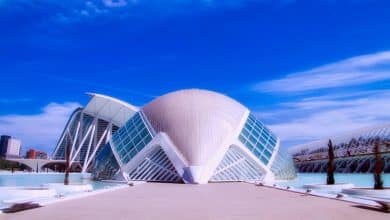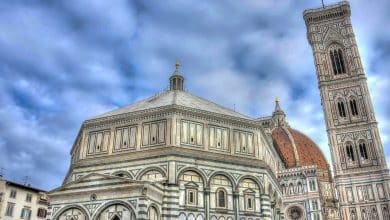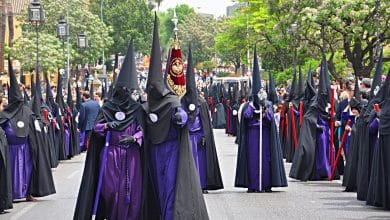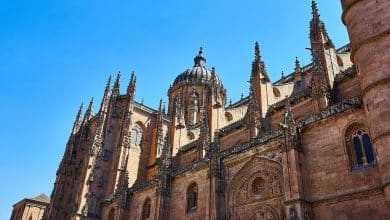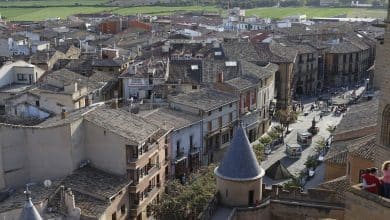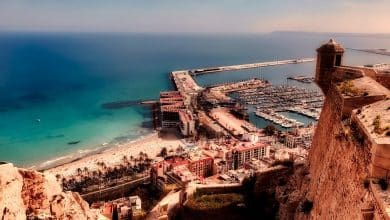Tower of Hercules Lighthouse attraction in Galicia Spain
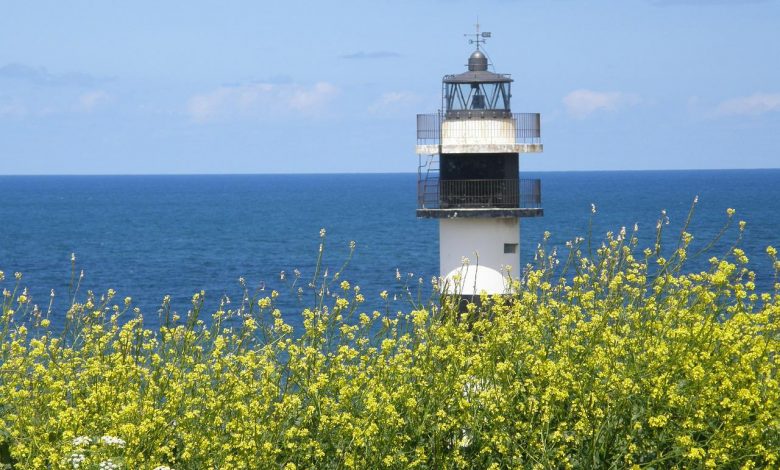
At the top of the tourist attractions in Spain, At La Corua harbor’s entry in northwest Spain’s northwestern province of Galicia’s Farum Brigantium, the Roman-built Tower of Hercules has operated as a lighthouse and beacon since the late 1st century AD. The Roman masonry accounts for 34 meters of the tower’s height, while the 18th-century restoration work led by architect Eustaquio Giannini added 21 meters to the tower’s height. The tower was erected on a 57-meter-high rock and now stands 55 meters high. A modest rectangular Roman structure is near to the Tower’s base. An Iron Age rock carving and a Muslim cemetery may also be found at the site, which includes a sculpture park. The building’s Roman foundations were discovered in the 1990s during excavations. Legends have surrounded the Tower of Hercules since its construction in the Greco-Roman era and continue to this day, as it is the only lighthouse from that era to have kept structural integrity and operation.
Avengers:
The origin of the Hercules Tower is the subject of several stories. According to Alfonso X the Wise’s History of Spain, Geryon enslaved his people. Their children and property were confiscated as a result of his extortionate demands.
Hercules slew Geryon after his followers fled to him. The Tower of Hercules sits where Hercules would have buried his head. In addition, the legendary Tower of Breogan has been linked to the structure. It’s a structure from the Lebor Gábala Érenn mythical cycle in Ireland.
According to Irish legend, the city of Brigantia in Galicia was ruled by Breogan. The Roman city of Brigantium, which would have been located near A Corua, has been named Brigantia. The Tower of Hercules would have replaced the Breogan Tower.

The city’s name would have been altered as well by Hercules. Crunia, the first woman to come, inspired him to give the place the name A Corua. According to reports, Alfonso IX was the one to give it its name.
The Tower’s Perspective
To the north of A Corua, the city of A Corua, stands the Tower of Hercules. It stands at a total height of 59 meters. The building’s outside has been extensively rebuilt, leaving only the interior’s Roman ruins.
Eustaqui Giannini was responsible for the repair of the outside of the building in the 18th century. Granite ashlars were used by the architect to clad the tower in a Neoclassical style. He was also in charge of designing and building an internal stairway to connect the levels. Additionally, Giannini demolished the lighthouse’s dome and constructed an octagonal structure. With a cross within, the tower has a square layout. It’s divided into four halves by four vaulted rooms. This structure was likely separated into three sections by an exterior ramp or stairway. The lighthouse fire was kept in a dome on the last floor.
A few interesting facts regarding the lighthouse tower!
Archaeological excavations may be seen from the Tower of Hercules in the present day. There are also stunning views of A Corua, the estuaries, and the Sisargas Islands in the far distance from this location.
Every night, the lighthouse is activated and ready to shine. It emits four flashes that travel 24 miles in each direction. As well as the light, it also emits an accompanying sound signal.
The lighthouse’s inner core dates back to the Roman era, but the outside ramp is vanished. In this inner core, each side of the structure measures 11.75 m (33 Roman feet) in length. Evidence of the helicoidal ramp and the outer wall was first discovered in 1992 during the archaeological investigations. Caballero Zoreda and Latorre González-Moro give evidence that the building was built on top of a platform of large ashlars that was leveled on a rocky hillside. Even after all these foundations have been laid, only the scar left by the platform’s alignments remains.
In terms of height, 37.58 m. of the Roman structure was preserved. This platform was constructed in the early 19th century and covers 3.20 m of the remaining 34.38 m, which may be seen from where they were excavated. According to 18th century texts, the Roman rotunda had a diameter of eight vara (about 6.40 m) and a height of 5 varas (4 m) in the capping part of this construction. The original height of the Tower would be around 41.58 m. Only the Pont du Gard (France) and the Trajan Column (Rome, Italy) are taller than this lighthouse, although it is still higher than the Column of Marcus Aurelius (Rome, Italy) and the Aqueduct of Segovia (Spain) and the Aqueduct of Les Ferreres (Tarragona, Espana).
Two towers in the city of Hercules
There are now two towers in the city of Hercules: the Roman one and the one that was rebuilt in 1789 by military architect Eustaquio Giannini in order to provide the existing lighthouse with a new lamp. Despite the neoclassical front, the Tower is the only Roman lighthouse to retain an essential portion of its original construction.

